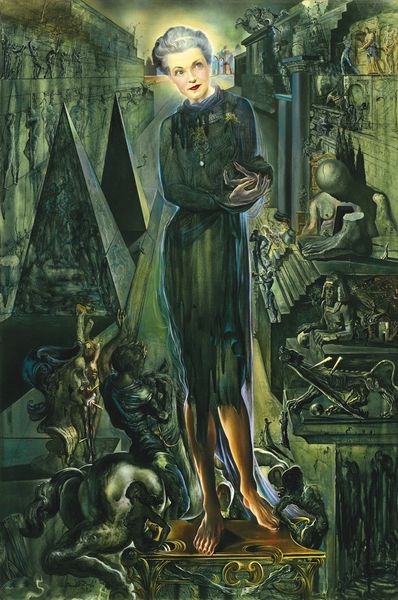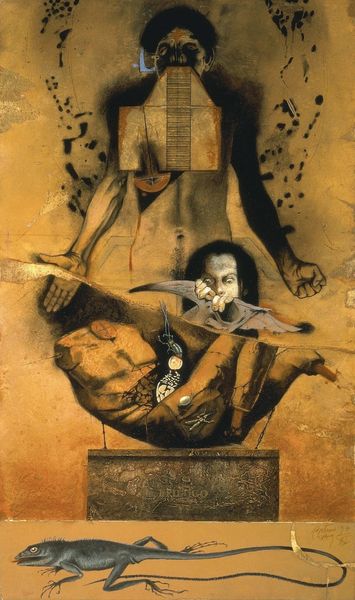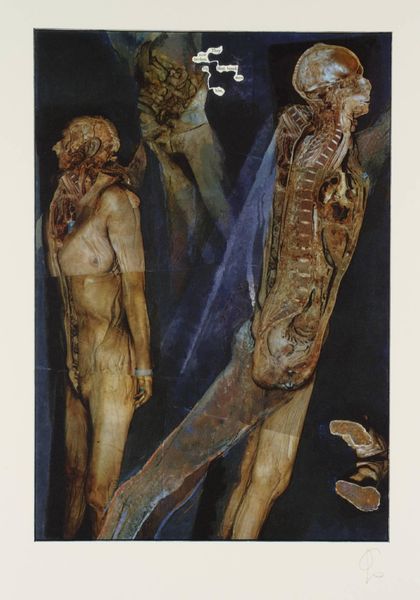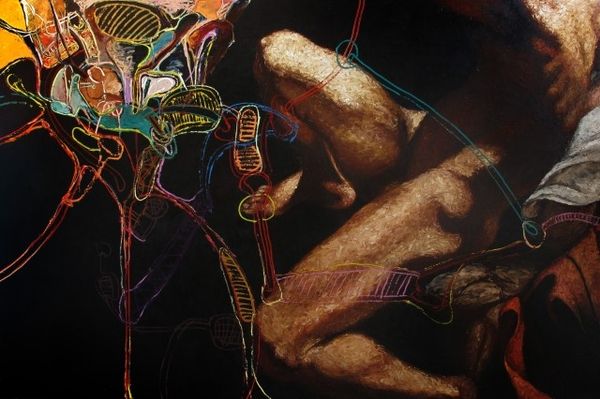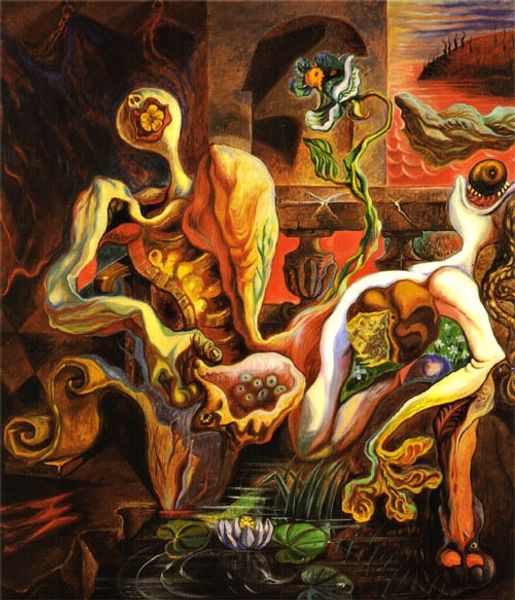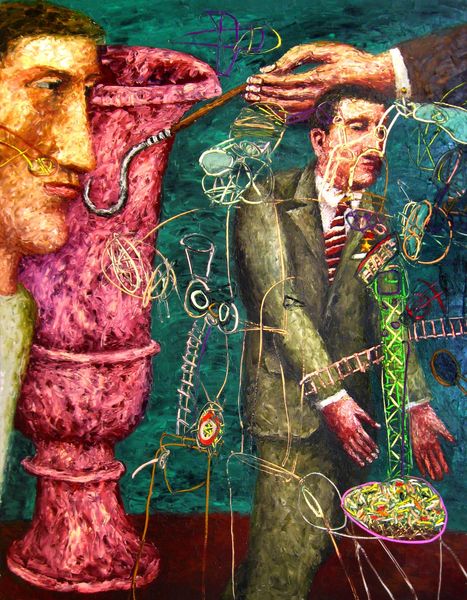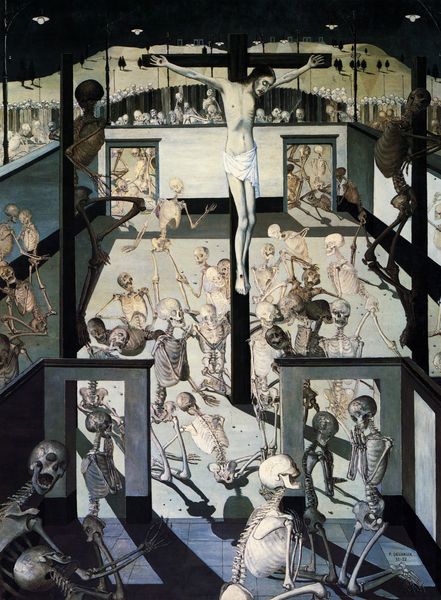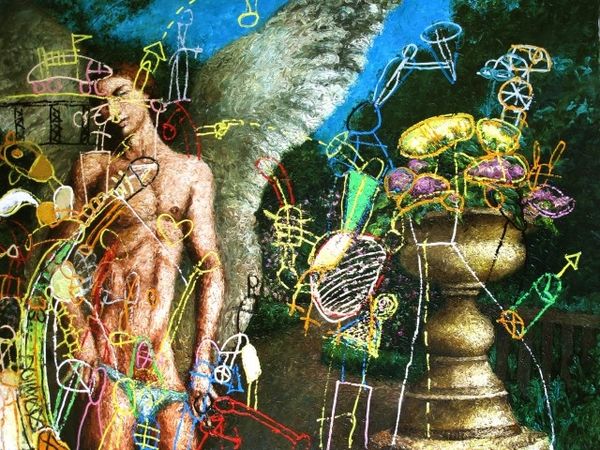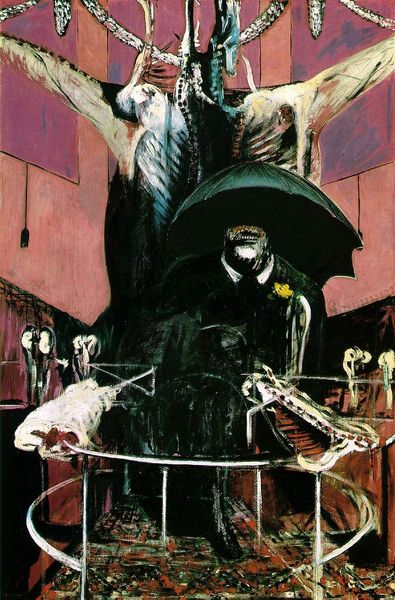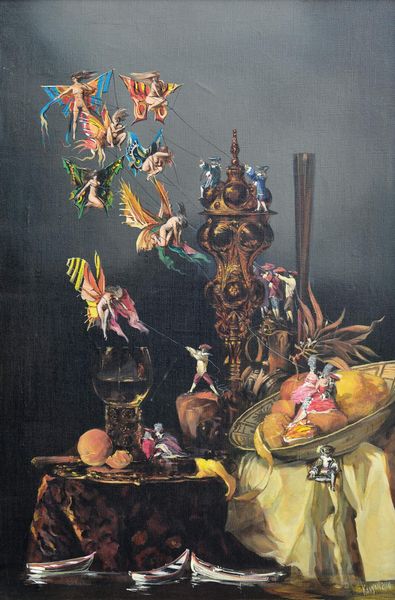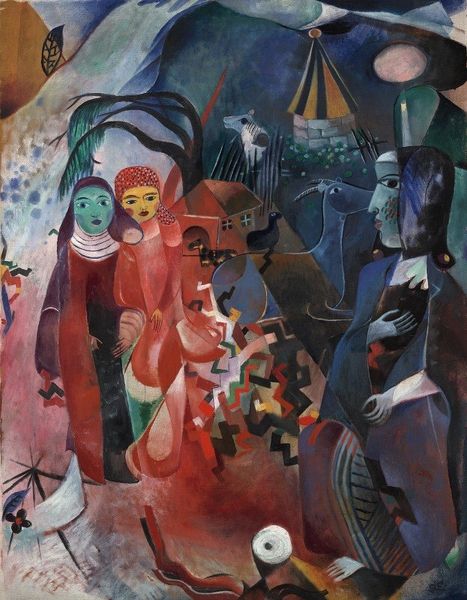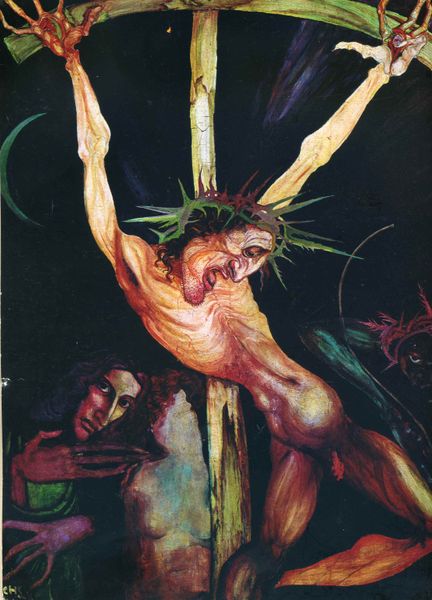
Copyright: Ernst Fuchs,Fair Use
Editor: So this is “Transformations of Flesh” by Ernst Fuchs, created in 1949 using oil paint. It has a distinctly unsettling quality, like a Hieronymus Bosch painting somehow modernized. How do you interpret this work, particularly within its historical context? Curator: The unease is very much the point. Remember, 1949 is barely post-World War II. Fuchs, as a Jewish artist in Vienna during that time, would have been deeply affected by the social and political turmoil. This painting, with its imagery of emaciated figures and skulls, isn't just a memento mori; it's a direct reflection on the fragility of human existence in the face of industrialized death. Notice how the figures seem to morph and decompose even as they gaze out at the viewer. What does that suggest to you? Editor: That the horrors of the war weren’t just a physical phenomenon; they were changing people, leaving scars. It’s like the boundaries between life and death are blurring. Is the neo-expressionist style adding something too? Curator: Precisely. The return to figuration in neo-expressionism allowed artists to grapple directly with emotional and psychological states. And Fuchs incorporates aspects of Mannerism too, exaggerating and distorting the body. This magnification of emotion helped him convey a sense of widespread societal trauma. In that sense, the painting has public and political meaning beyond personal mourning, reflecting a sense of collective damage. Editor: That makes the painting's impact much more direct than I initially understood. I had been reading it primarily in terms of universal themes. Curator: Well, universal themes are only truly effective if an artwork manages to make their contemporary viewers feel connected, disturbed or challenged. With his combination of historic painting techniques and shocking imagery, Ernst Fuchs clearly did. It's definitely food for thought, especially considering the continued role of political and social events in art. Editor: Absolutely, a stark reminder that even fantasy art can be powerfully grounded in reality.
Comments
No comments
Be the first to comment and join the conversation on the ultimate creative platform.
